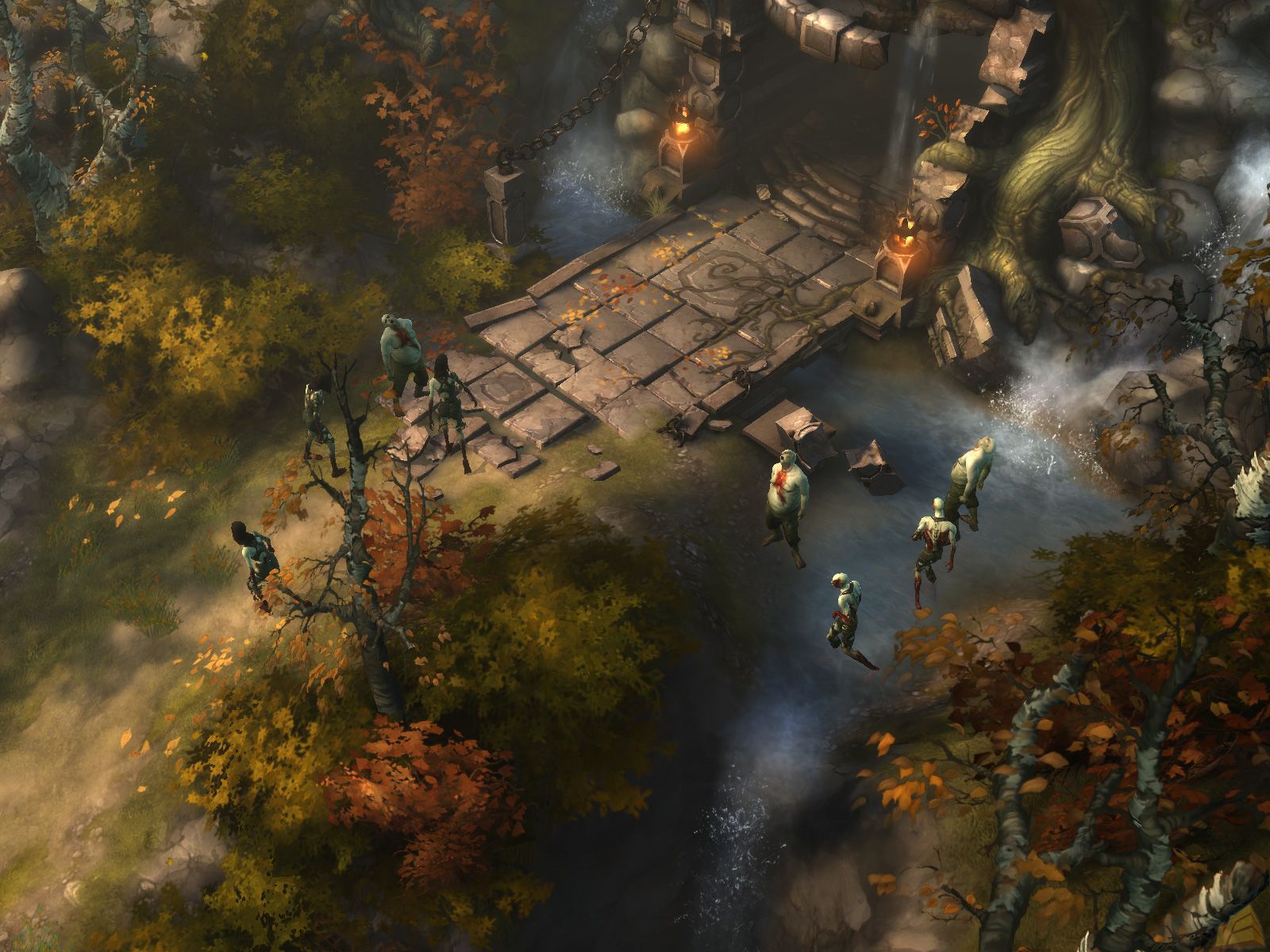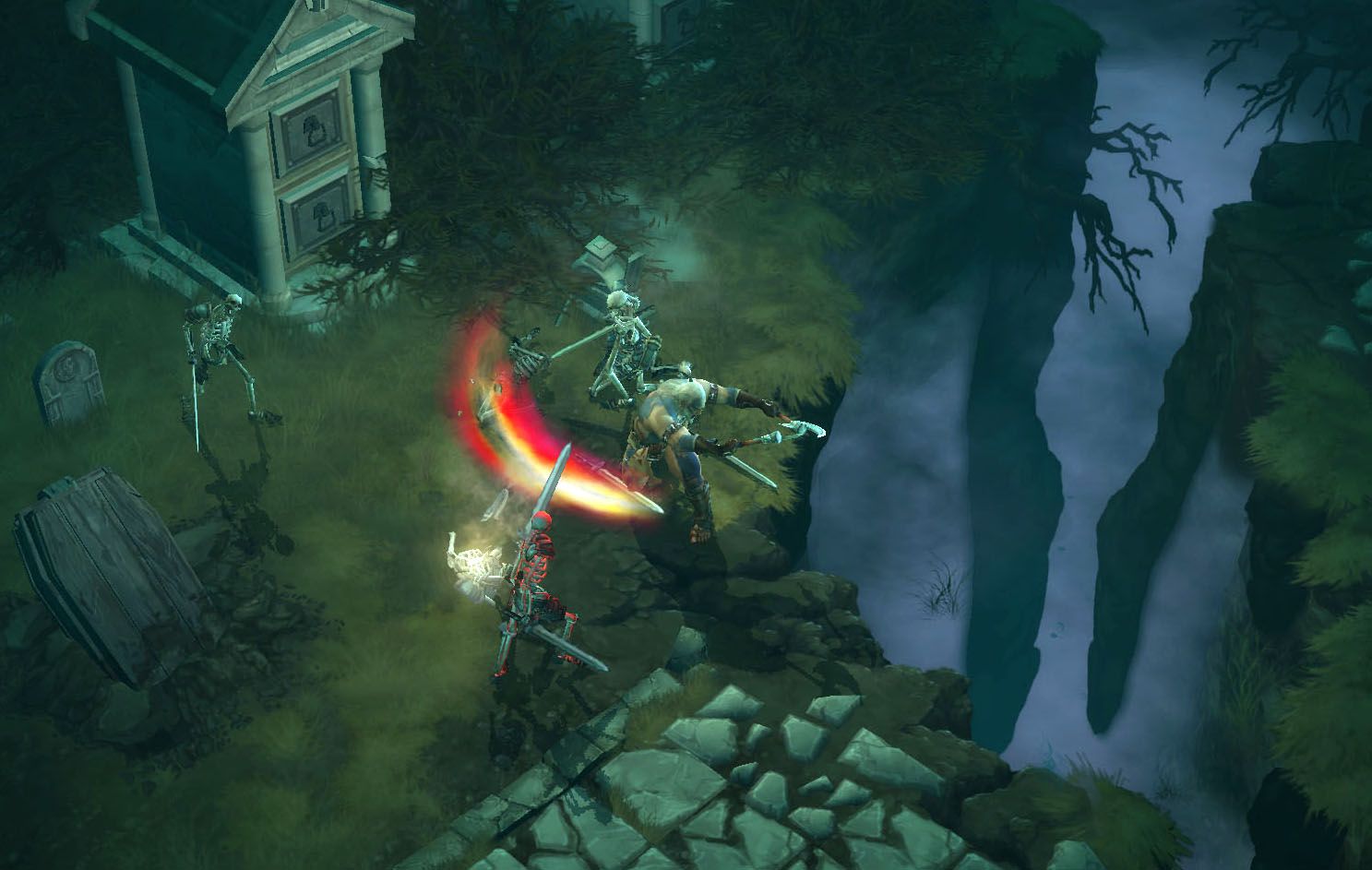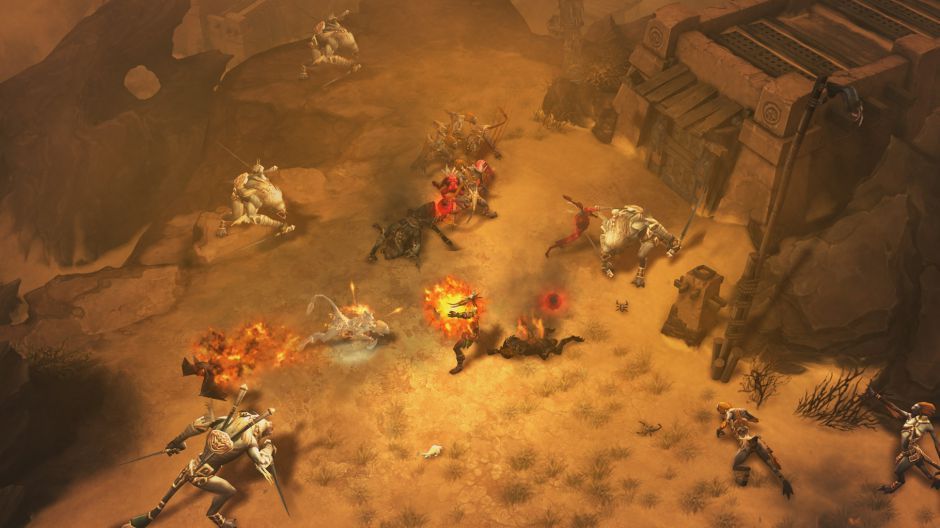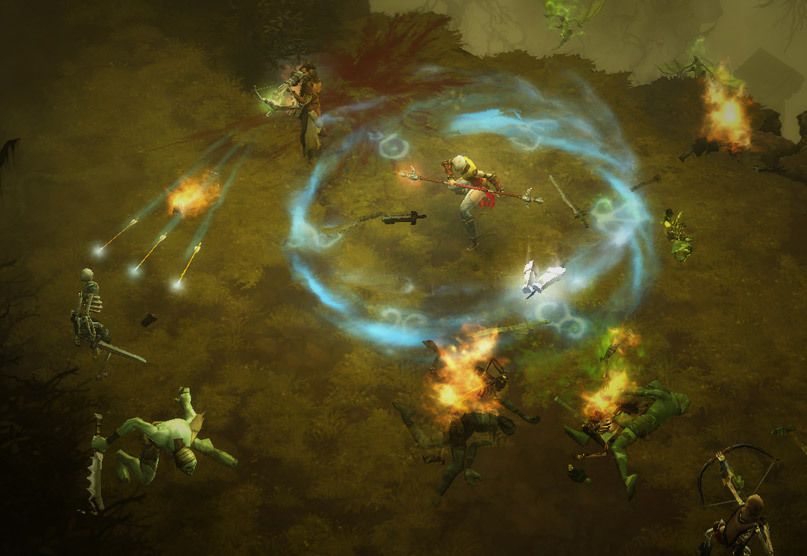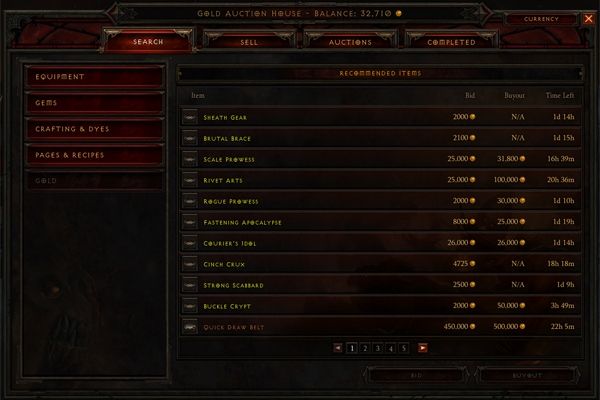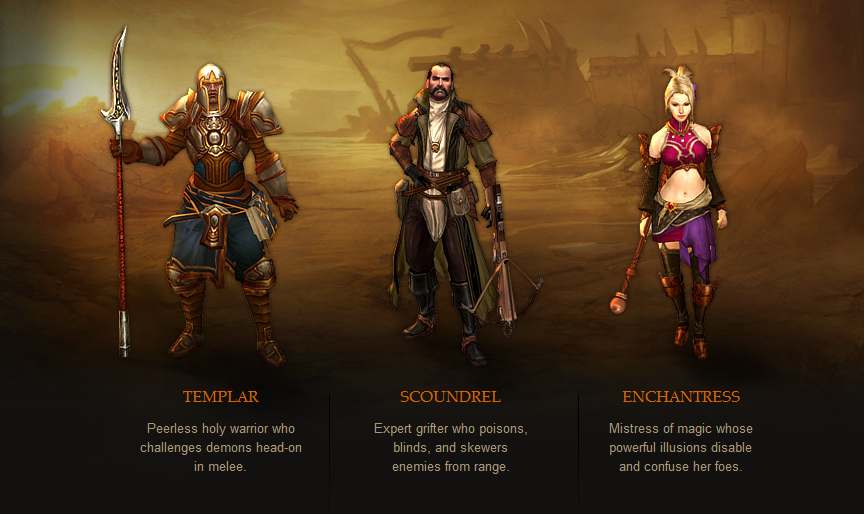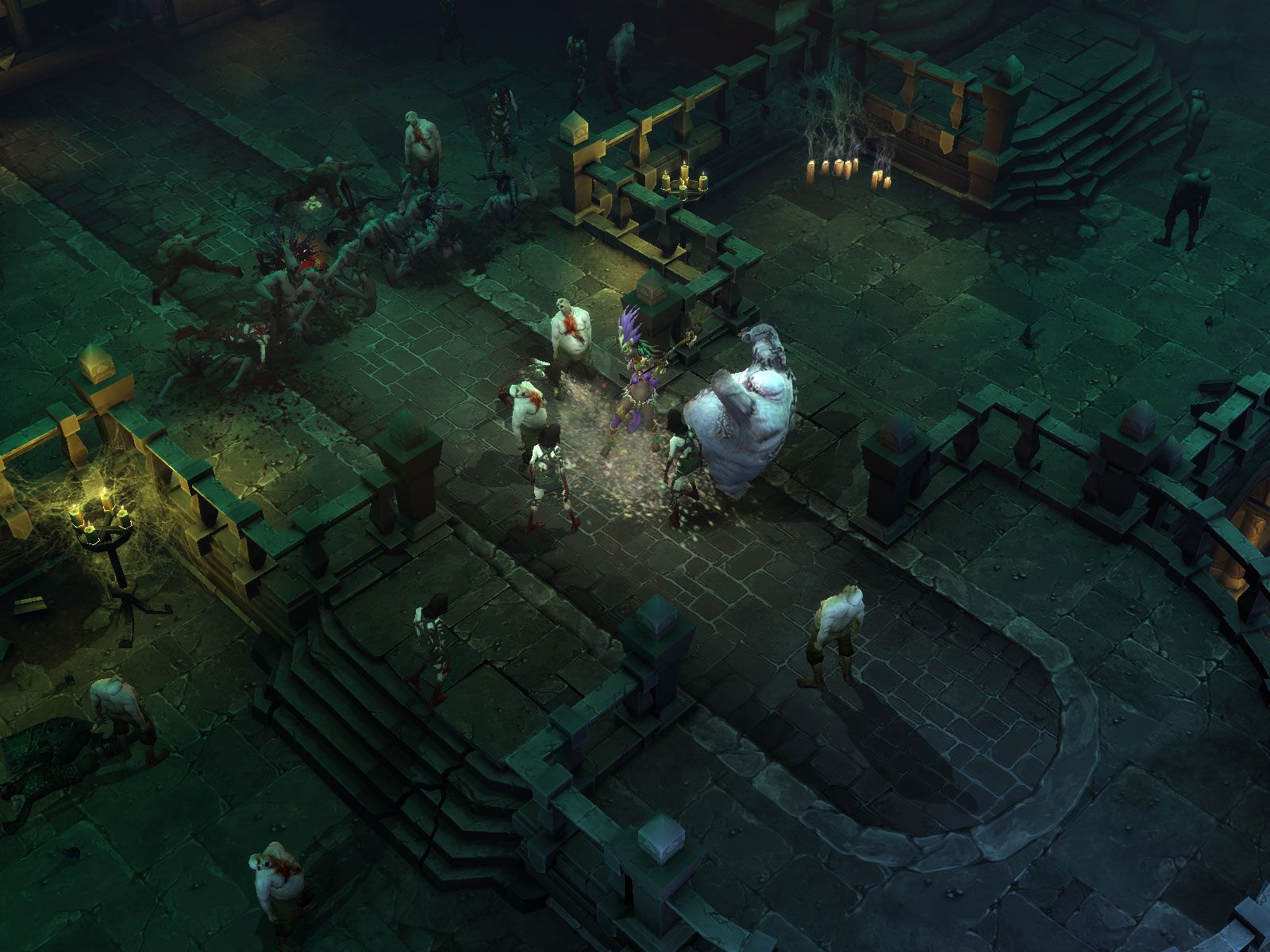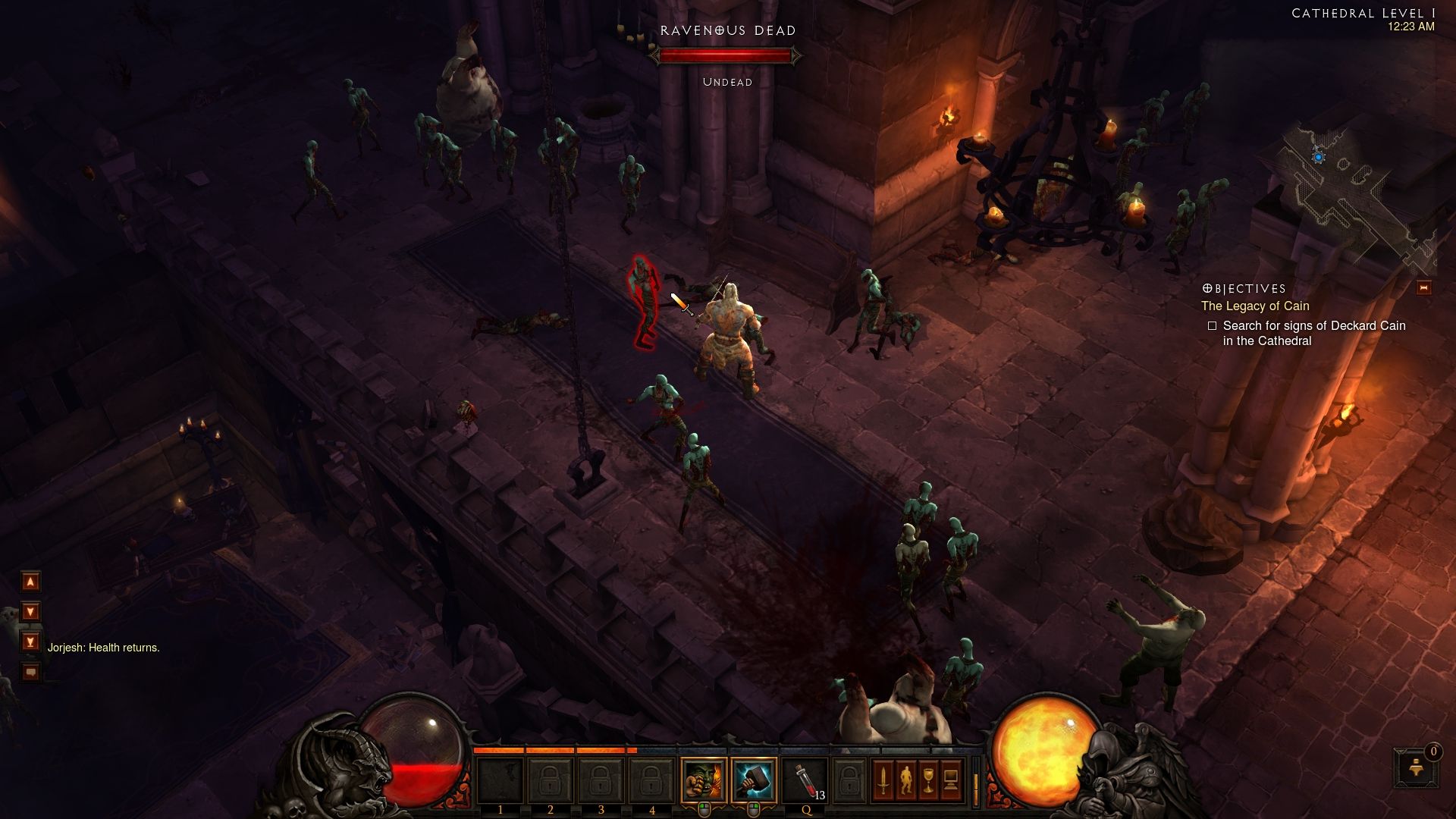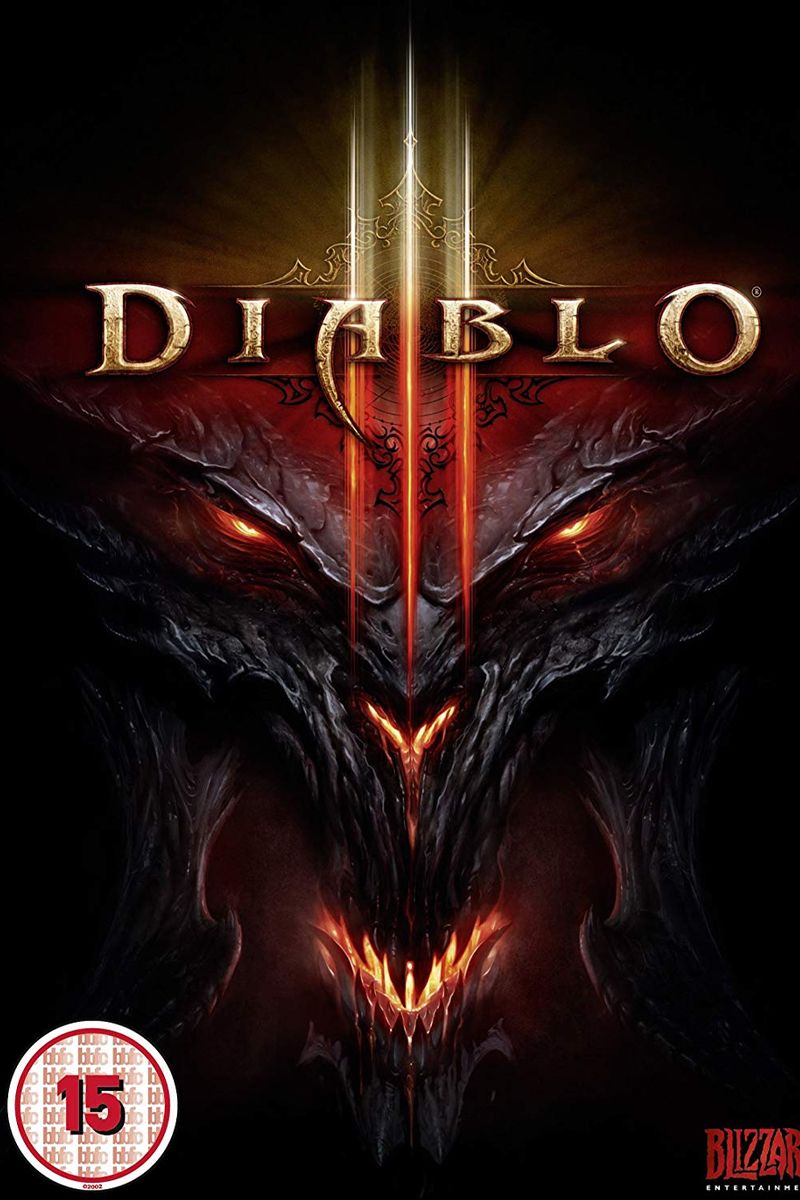Over a decade has passed since Diablo graced us with his calamitous presence in the ill-fated world of Sanctuary. Twelve years to be exact – quite a long time to wait for a sequel, if you ask me. But Blizzard games, in the end, tend to be worth the wait, as fans of the developer have come to realize. The company is well-known for their long development cycles and secrecy; but, above all else, they’re known for producing quality games that leave the player undoubtedly satisfied craving for a larger serving of indulgence. To that end, Diablo III is no different in some ways.
As a faithful fan of the series, I would have composed an unbiased review quickly after playing the game simply because of my attachment and praise for the previous installments in the series. I spent countless hours pampering my urges – urges that have waited to be fostered for ages. Like any other person who played the game intently, I invested whatever free time I could afford feeding my eyes and ears to the new experience that Blizzard had concocted.
The game begins twenty years after the events of Diablo II. Sanctuary, the dark world where the Diablo series takes place, is treated to a fallen star which the player, known as the Nephalem, arrives to investigate in New Tristram. Of course, I can go beyond this point of the plot, but I think it’s best if the story unfolds on its own at your expense, due the how sporadically events unravel themselves in this game. The story itself isn't a sophisticated facet of the game, but it definitely adds an aroma of atonement to the series.
At its core, Diablo III is what most would expect out of a Diablo game: create your hero, spam attack the crap out of a of demon mobs, level up, and treat yourself to some good ol’ looting. If you’ve played the series in the past, you’ll probably think that not a lot has changed from the previous games. To a small degree, you're right.
Diablo III introduces a new way of leveling your character which allows you to define your playstyle based new skills obtained upon leveling, or the augmentation of “runes” -- a modifier for the skills you have earned through leveling and have selected for your hero. By default, the game enables an “Elective Mode” that puts each of your unlockable skills in categories and limits you to having one of each type accessible at a time. While you do have the option of disabling Elective Mode and assign any skill to any slot, this option will assist any newcomers in acquainting themselves with their chosen class.
What about the traditional way of leveling where you, the player, choose which attributes to increase and which skills to obtain based on a skill tree? That previous way of uniquely modifying your hero has been completed omitted from Diablo III. Now, before you go on in an angry tirade about how they’ve eliminated the “hardcore” element of tuning your character, understand that, from a uniform perspective, Diablo III’s skill system adds the element of diversified builds as the game, and story, progresses.
While you had the freedom of customizing your hero in previous games, the new skill and rune system relinquishes the potential of completely screwing up your character while, at the same time, offering assorted builds which can be customized on the fly – a perk which many players will appreciate in more difficult options. You are encouraged throughout the game to try out all of the skills and rune types, which is a breath of fresh air as you take your hero through the different difficulty modes of Diablo III. Of course, the more challenging portion is unlocking all of the skills and runes in the game, which is a feat reserved more for the gamer looking to expand beyond the “normal” difficulty and go above and beyond level 30.
Runes are a great and refreshing way to handle skill augmentation because those skill which may seem useless in the beginning of the game when obtained, become an amazing additional to your arsenal of ass-kicking skills as the game progresses. My barbarian, for example, has a skill called “Ground Stomp” which smashes the ground, stunning all enemies around him for a few seconds. Now, while this is a useful skill out of the box, adding the rune “Wrenching Smash” made the skill more robust as it increases the area of effect from twelve yards to twenty-four years, and enemies are pulled closer to my hero before the strike lands. This makes grouping and cleaving enemies more effective and easier to control.
Many may not appreciate the overhaul of the leveling system, but Diablo III’s core fundamentals have not changed much, which may be both a good and bad thing, depending on the player. For one, there was a moment of pure nostalgia as I took my barbarian on a test run to bash in the heads of the undead. The controls were familiar, as was the music and ambiance. At first, it’s a sentiment which you cherish as you take in the realization that you’re finally playing a new Diablo game. As I continued to tune myself in with the game, I came to realization that not everything, in fact, was as “new” as I thought. My excitement and need to appease my nostalgia momentarily distorted my thoughts. In that instance, I knew that Diablo III, in essence, evolved little from its predecessors.
In no way is this a bad thing, though. The things that made the previous Diablo games amazing migrated their way onto Diablo III. Everything worked before, and everything – even after a decade – works now. What keeps me latched on to the game isn’t the story. Traditionally, it’s the loot system. There’s nothing more satisfying to me than coming down unmercifully with my weapons on an enemy to watch their limbs explode into an abundance of gold and treasure that perpetuates a plethora of exultation, as my eyes widen in anticipation ogling any signs of rarity that exposes itself onscreen. As my bags begin to fill itself with a huge amount of crap, I pat myself on the head knowing that this bag of unusable trash may, indeed, be worth some gold back in town. On rare occasions, the explosion of limbs and blood will treat my hero to some yellow drops (rare) which will need to be identified after I’ve made ground beef of the hellish ghouls.
Drops may be frequent, but randomly generated magic items with stats useless to you are much more frequent. While non-magic items may be worth zilch in Diablo III’s renovated economy, the aforementioned magic items useless to your hero have a much more appealing means of trade. You have the option of selling them to a vendor for gold, auctioning them to other players who on Battle.NET, or breaking them down into party for crafting at the blacksmith. As I quickly noticed, gold is a commodity that is rather scarce in Diablo III. Gold, in previous Diablo titles, was obtained and stored with a smaller range of use. Diablo III, however, introduces more meaningful ways of spending your gold. Not only can you use it to purchase items from other players, but it’s also used to level up both your blacksmith and jeweler, purchase additional space in your stash (and it is needed, believe me), and repair your equipment.
If you’re comfortable with your gold stash, it’s best to take magic items that won’t be used to the trusty blacksmith. The blacksmith breaks down magic items into component parts, which then can be used (with the needed addition of gold) to craft new weapons and armor for your hero. You’re constantly left with the torment of selling a magic item for gold (which is beneficial in the long run), or taking a chance and breaking it into parts to create something new. If you train your blacksmith and pay the gold needed to level him up, the equipment that can be created is, without a doubt, very useful. It may not be as fruitful as finding spontaneous items off a monster, as each crafted item’s randomized stats ensure small doses euphoria, but having a blacksmith with some a good amount of options is never a bad thing. The jeweler rounds out the blacksmith crafting system; but the gems fashioned have predictable stats, making crafting jewelry a less enticing venue for excitement. Regardless, the jeweler provides an alternate venue for taking advantage of socketed items which are beneficial in the game.
If I wasn’t going to the blacksmith to break down my unused magic items, or selling them for gold, I found myself selling them in the auction house. The auction house is a virtual market which is powered by the Diablo III community (at this juncture, there is only in-game gold transactions, as the real money auction house has not been implemented), selling items from either my stash or my barbarian. If you’re well-endowed with spendable gold, you can pick up items for your hero instead of hunting for them by quickly searching for the specific armor slot or weapon type within the auction house. To a degree, it’s nice to have this system available. But what makes everything a bit erratic is the ten item auction limit that Blizzard has set. While it may not seem like a big deal, it can be annoying when constantly waiting for something to sell in order to place your next item in the auction house.
While there the economic system in Diablo III has been revamped to a satisfying degree, the combat in the game holds up fairly well because, like its predecessors, of its randomly generated dungeons and monsters. In one instance, you can be exploring a cavernous dungeon filled with feeble demons. Revisit the same section of the game again and you may face a completely different layout filled with elite demons. As you play certain areas tied to the story, they may be laid out in the same way as you last encountered it. However, level, and the enemies that populate them are a completely different matter, as they are largely unpredictable. In essence, this is one of the great things about Diablo III – the idea of not knowing is what makes it exciting and keeps you alert. Death can literally be waiting for you at the turn of every corner. This element just adds to the sense of adventure and makes the player feel that much more empowered once they have defeated their foes.
A stimulating constituent that I subconsciously found myself enjoying, for some reason, was the having a companion, or followers, by my side as I ventured through the world conquering demonic creatures. Diablo III instills the player with companions which can be "hired" to assist the hero in his adventure. Three followers exist in the game: Korman the Templar, Lyndon the Scoundrel, and Eirena the Enchantress. Each follower has their own unique set of customizable abilities which help your hero during battle. Some may be support-related abilities, which is beneficial to both your champion and the follower, while others are generally attack-based abilities. Weapons, rings, a necklace, and a relic (a relic is a unique piece equipment which can be worn by a follower with a specific set of stats) can be swapped out on your follower's inventory.
Each follower has their own storyline, with their own reasons for fighting, which adds to the progress of Diablo III, never detracting from the main story arc. Each one with a past shared with your hero, and an objective that they, like your hero, wish to achieve. In previous Diablo games, I found the world to be completely dense and lonely because of how "empty" it seemed. In Diablo III, followers add an ambiance of companionship. They'll randomly start a conversation with your hero whilst you explore a dungeon, sharing a bit of who they are with you, adding a sense of legitimate conviviality to your adventure.
For the experienced player, maybe running through the campaign once isn’t satisfactory enough. With randomly-generated monsters and areas, as well as a range of difficulties to play on, there is always a challenge brewing and loot to be obtained. Your first run through Act I may introduce you to a chest filled with potential goodies. Explore that same place again, and you may find yourself facing colossal demons ready to slap you into the afterlife. Add to the additional difficulty levels a pinch of powers you have never seen, and in combinations that make them genuinely threatening to your hero who seemed godly previously and you’re left with a world of challenge. Challenge which can be a welcoming feat of Diablo III, or an angering, keyboard-breaking moment which you will hate.
Difficulty levels add a handful of replayability in Diablo III, that much is certain. You will find yourself challenging your limits and patience as you explore the world of Sancturary over and over again to quench your thirst for stimulation. Another mode which gives you the opportunity to beat demons to a pulp is playing online with friends or complete total strangers. Because Diablo III is always online, you can quickly bring up your Battle.net friends list and join another player’s game, or invite three others to join your game. Once you’re together, you can then teleport to one another from town, killing demons who become much tougher with each player that joins the game. Killing a boss alone brings you a sense of alleviation and total satisfaction, but doing it with others make the experience far more challenging and for more rewarding.
While some may think the experience may be impeded by people stealing loot from one another, you’ll be happy to know that Blizzard has made it so the only loot you see is your own. If you wish to share items you can drop it from your inventory or trade it. Rather than fighting as to who gets what loot, everyone just focuses on enjoying battles and reaping their rewards. What would have made the experience a bit more satisfying, though, would have been integrated voice communication, as typing while slaying monsters isn’t comfortable. Regardless, however, it’s definitely a feature of the game that adds a layer of replay, which many games nowadays tend to lack.
My gripes have nothing to do with the visuals or gameplay of Diablo III. The game, when compared to what’s currently out there, may not be a visual masterpiece, but it holds its own for what it is and what it does. What Blizzard does right is that they make sure that even older, worn out systems (the game is supported on Windows XP, requires, at minimum specifications, 1GB of RAM, and supports 1024x768 resolution) are capable of playing Diablo III, providing the experience to folks who aren’t able to afford a top-of-the-line gaming rig. What Blizzard may have done wrong, in the eyes of many fans, is making the single-player portion of the game an online-based experience.
The online-based experience may allow for Blizzard to better serve how things are distributed (item drops, monsters, etc, are done server side, NPCs) and, regardless of what they may say, control piracy. What makes this a problem are the issues that online games come with: latency issues, the requirement for a broadband connection and, worst of all, getting disconnected. I’ve encountered situations where I was almost completed with a level/dungeon to get completely get kicked off the server. In any game, the most frustrating thing is to experience a complete loss (freeze, disconnect) from the game when you’re close to achieving your goal. Then you have people who may want to play Diablo III on the go (via their laptop). Because the game is confined to a broadband connection, players are unable to play outside a location that provides internet connection. Personally, it makes little sense to serve a single player campaign when the entire experience requires constant connection to the internet – an issue which I have heard disputed by players of Diablo III.
Diablo III is an amazing game. That much I can’t deny. What it does, it does extremely well. While many of its core elements haven’t changed in over a decade, my argument is why change something when it works? You have an solid story accompanying a game that manages to somehow make spam-killing demons for loot entertaining, also adding the component of replayability. The formula may have not changed drastically over the years, but the little changes that have gone into Diablo III are changes that make it unique when compared to the previous installments. It’s addicting on a plateau that few games can match up against; so much that it’s easy to overlook the said flaws of perpetual internet connectivity, and such. While I can sit here and dissect Diablo III’s overall design, its grievances are so miniscule when compared to the sheer enjoyment of the package that doing so will just be bickering. It’s a game that, like many Blizzard games, has become a historic collection in my library that I’m sure I will continue to nourish for years to come.

